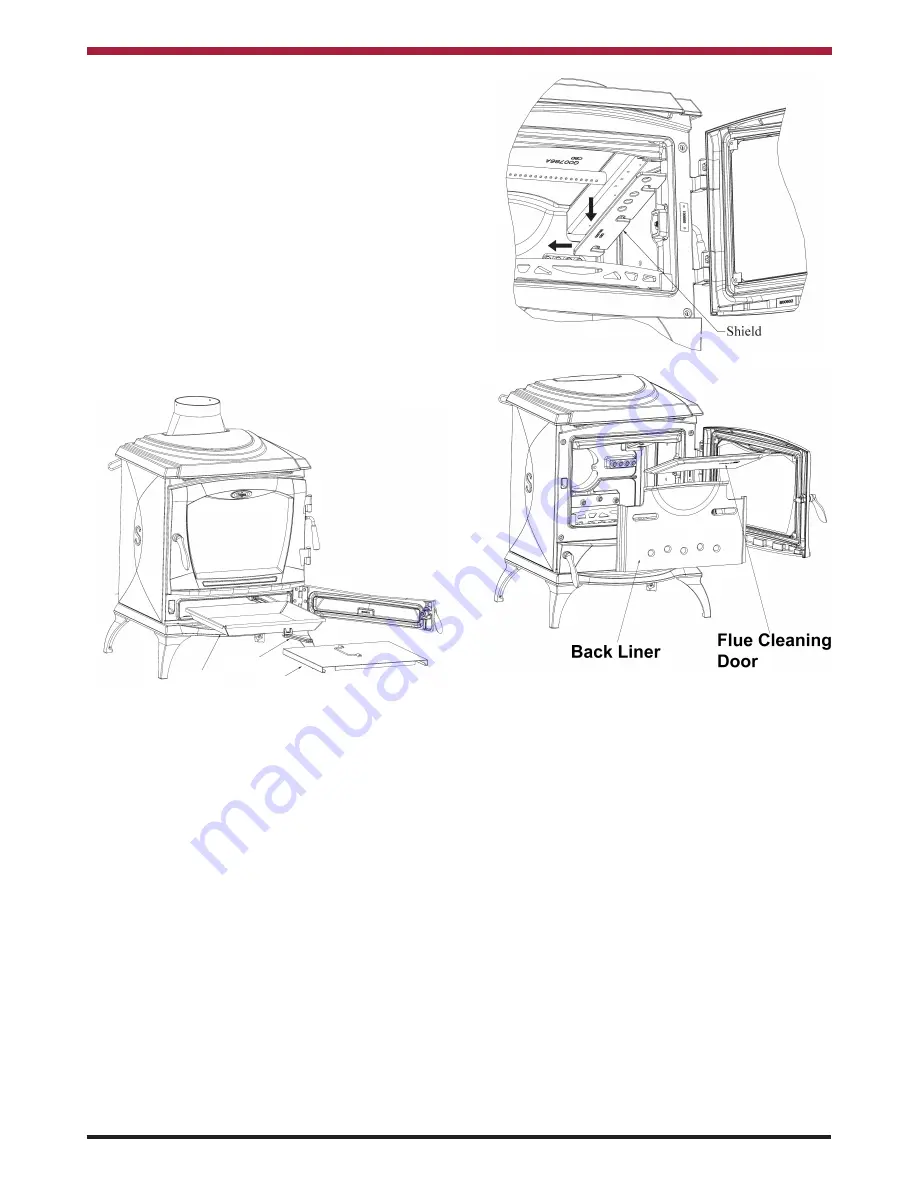
DE-ASHING & DISPOSAL
De-Ashing must be carried out when the stove is
cold.
Brush the ashes through the grate into the
ashpan below.
The ashpan should be emptied every day. If ashes
are allowed to build to grate level you could damage
the firebars by overheating.
Ashes should be placed in a metal or other non-
combustible container with a tight fitting lid. The
closed container of ashes should be placed on a
non-combustible material, pending final disposal. If
ashes are buried in soil, or otherwise dumped they
should be retained in the closed container until they
are thoroughly cooled. See Fig.23.
Fig.23
CHIMNEY CLEANING/ BAFFLE REMOVAL
Remove the hanging shields by lifting and pulling
them towards the front of the stove and sliding
towards the centre of the stove. Remove the pro-
tection plate on the left hand side of the stove. Then
remove the back casting by sliding it forward and to
the left, remove the secondary air pipes by twisting
the pipe clear of the hook push the pipe to the right,
the left end will fall into the stove and the pipe can
be removed. Remove the top baffle by sliding it to
the fornt of the stove, lift it and push it to one side
allowing the opposite to fall into the stove.
Replace in reverse order when chimney cleaning is
complete. See Figs 24 & 25.
NOTE:
Where the chimney is believed to have
served an open fire installation it is possible that the
higher flue gas temperature from a closed appliance
may loosen deposits that were previously firmly
adhered, with the consequent risk of flue blockage,
it is therefore recommended that the chimney be
swept a second time within a month of regular use
after installation.
15
Fig.25
Fig.24
FIRE SAFETY
To provide reasonable fire safety, the following
should be given serious consideration.
1. Do not over fire the stove.
2. Over-firing will also damage painted or enamel
finish.
3. Install a smoke detector in the room.
4. A conveniently located class A fire extinguisher to
contend with small fires resulting from burning
embers.
5. A practical evacuation plan.
6. A plan to deal with a chimney fire as follows:-
(a) Notify the fire department.
(b) Prepare occupants for immediate evacua-
tion.
(c) Close all openings into the stove.
(d) While awaiting the fire department watch for
ignition to adjacent combustibles from over-
heated flue pipe or from embers or sparks
from the chimney.
Ashpan
Ashpan Lid
Lifting Tool
Summary of Contents for Reginald
Page 18: ...17 EXPLODED VIEW...



















